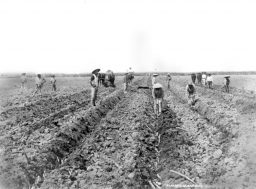WARGAME WEDNESDAY: Avalon Hill’s The Arab-Israeli Wars – Part 3: The Chinese Farm (or That’s a Wrap)
Wednesday , 28, September 2016 Wargames 2 Comments Before calling it quits on this one, my dad wanted to do one last big tank vs. tank battle. The Chinese Farm scenario in The Arab Israeli Wars is one of the largest in terms of piece-count. Two contingents of Israeli armor and mobile infantry move in from the south and east against a string of heavily fortified Egyptian positions along the Suez canal with the goal of securing or destroying bridges. An Egyptian armored response force moves in from the north to meet them.
Before calling it quits on this one, my dad wanted to do one last big tank vs. tank battle. The Chinese Farm scenario in The Arab Israeli Wars is one of the largest in terms of piece-count. Two contingents of Israeli armor and mobile infantry move in from the south and east against a string of heavily fortified Egyptian positions along the Suez canal with the goal of securing or destroying bridges. An Egyptian armored response force moves in from the north to meet them.
This scenario highlighted some rather wonky balance issues, both in the course of play and in its resolution.
While turreted vehicles can fire then move, they cannot move then fire. This puts the scenario’s attacker in nearly any situation at a disadvantage where it behooves one to approach very cautiously on turn one, merely moving onto the map and little further, to avoid a hail of opportunity fire. With many many pieces being moved, the early game was exhausting, noting each unit’s path, lines of sight and deciding whether or not opportunity fire is permissible or desirable. As the game progressed and ‘opened up’ more, with all pieces on the board and several units destroyed, this became less tedious and time consuming.
My eastern contingent met the Egyptian armor, using what opportunity fire it could to wear down the inferior, though outnumbering, force; even though most of tank fighting took place in eastern portion of the battlefield, its primary purpose was to distract from the southern force pushing upward along the Canal.
Rather than getting bogged down in fire-fights against improved positions, I went with a rolling thunder strategy of shelling the Egyptian infantry and mortars with my off-board artillery and sending my tanks right over the trenches, squishing my foes and pushing ever north toward the bridges. By concentrating all of his long range artillery and Sagger anti-tank missiles on one or two units at a time, my dad was able to wear down the eastern tank force substantially, and my half-track mobile infantry weren’t good for much but drawing fire; still, I’d made it to the biggest nest of Egyptian fortifications and near enough to the bridges I could start shelling them.
So, here is where it got strange – the Egyptian armor wiped out the last holdouts of my eastern troop; then the last of them got blown up by a few of my southern troops who’d been guarding the flank. By around turn 12 or 13, I’d managed to blow up two of the bridges with ranged attacks just before being slaughtered nearly to the man.
Though the Egyptians lost two bridges and all of their armor, they still had one bridge secure, most of their artillery, a lot of infantry, and fortifications, while I had only two of my nearly forty starting units left when we decided to call it. Based on the scenario’s scoring, the outcome was a decisive Israeli victory. I’d recommend halving the victory points for Israeli objectives to 10 points for a bridge destroyed and 15 for a bridge captured; this would’ve changed the outcome to a marginal Israeli victory or possibly a draw.
My conclusion on The Arab-Israeli Wars based on the three scenarios I played? It’s got a lot of things going for it, but it tries to do too much and feels rather clumsy at times. Whether it’s the combat circumstance modification chart with its dozen footnotes or keeping track of who can be/has been seen and where, it’s a game that takes more getting used to than even a couple playthroughs over several weeks really gave me. And small things like looking through at least three different sections of rules on how Bridges work before finally finding whether they were treated as hard or soft targets, while an issue common to many wargames, served to compound my frustration with other aspects of play.
Does it improve on Panzer Leader? Absolutely. Is it a game I’d want to spend a lot of time with? Not particularly. Even though I won 3 for 3, it felt arduous and, at times, undeserved. For my money, The Yom-Kippur War is still the best Arab-Israeli conflict board game I’ve played.
-Alex
::Not depicted in the image – the Egyptian Agricultural Research facility the Israelis mistook for a Chinese farm because of the Japanese characters on the equipment ¯\_(ツ)_/¯ ::